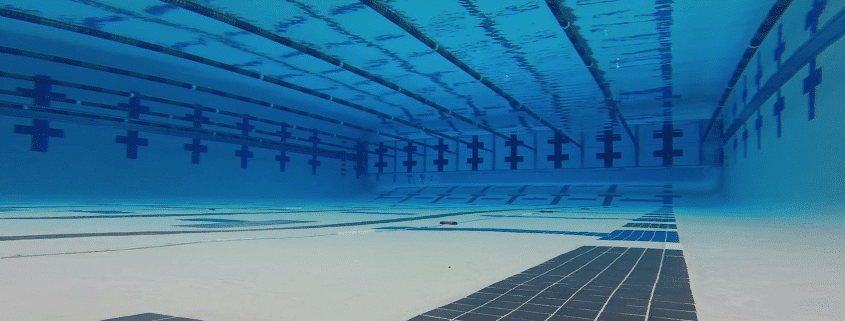Why we treat our water with Enzymes

Chlorine is primarily a sanitizer. It's secondary role in pool chemistry is oxidation of other contaminants, like bather waste. Unfortunately there is a lot of bather waste and other oxidants that reduce chlorine rapidly, which interferes with its primary mission of sanitization. Enzymes devour non-living organics (bather waste). Supplementing your chlorine with enzymes is part of our Second Pillar of Proactive Pool Care.
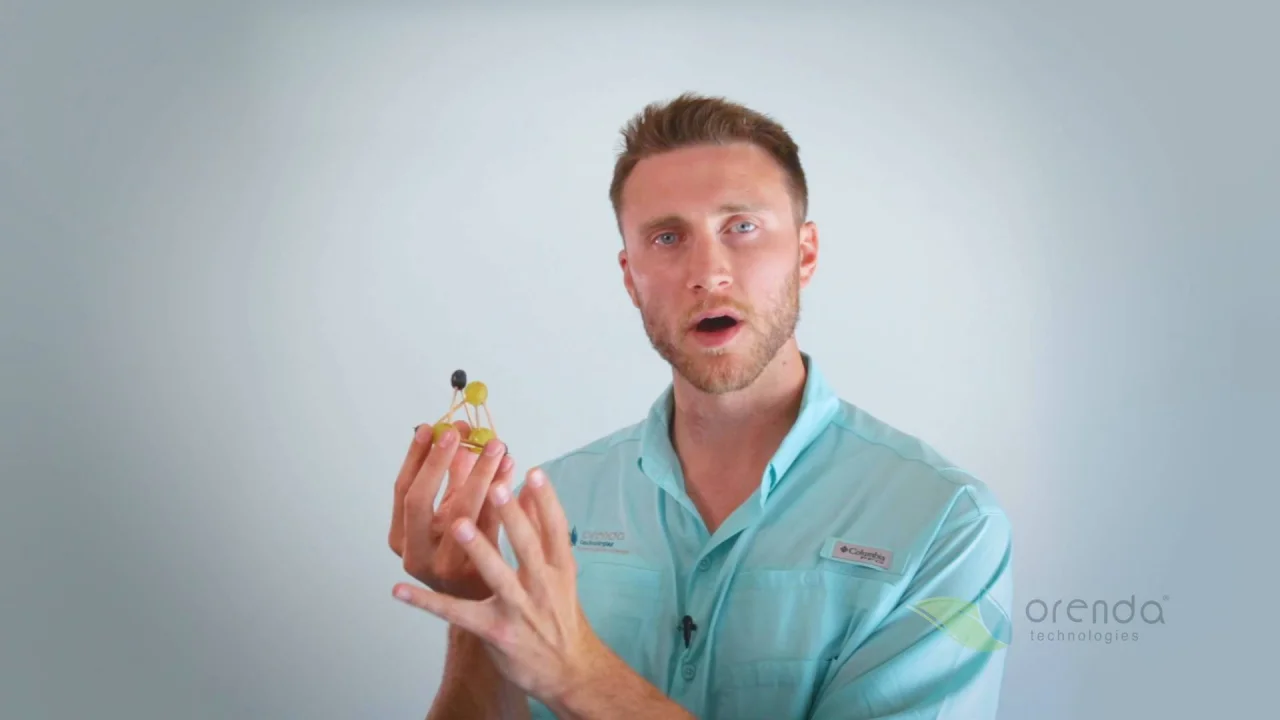
Enzymes. You may have heard of them being used to treat pool water (or other types of water). But have enzymes ever been clearly explained? Do you know what they are, how they work and why? If not, this article is for you. But before reading further, here are two disclaimers:
- This article paraphrases complex chemistry. It is simplified for readability, and uses analogies for those of us without a background in organic chemistry.
- Enzymes in pool water are not to be confused with sanitizers (like chlorine). Enzymes are not designed to kill or disinfect bacteria, viruses or any other type of disease, nor do they kill algae. They are designed to make this job easier for chlorine and subsequently make your pool a better experience for its users.
What are enzymes?
According to multiple sources (like this, this, and this), enzymes are proteins that are biological catalysts for chemical reactions. Their purpose is to start or accelerate reactions between specific types of molecules. These reactions may not otherwise occur without enzymes. After the reaction is complete, the enzyme moves on to find more components for the next reaction.
There are thousands of enzymes in our bodies, and even more can be found in nature. Some serve as a sort of template for replicating new molecules. Think of a carpenter using a template jig to make 100 shapes that need to fit together precisely. Other enzymes act like PacMan, eating through all the food in their path following a very specific appetite. These enzymes are voracious and will eat as much of their specific diet—and nothing else—as is available to them, digest it, and move on to find more.
Orenda’s CV-600 and CV-700 enzymes have insatiable appetites for carbon-based organic waste. They specifically seek out non-living organics found in water: body oils, sweat, dead skin, saliva, mucous, urine, feces, sunscreen, environmental organics, (and so on and so forth). Mmmmmm…delicious.
New vocabulary word: “surfactant”
Surfactants are found in almost every household cleaning product, including laundry detergent and dish soap. Surfactants are responsible for the grease-cutting power of dish soap, where a single drop makes grease jump away. Technically speaking, surfactants do this by reducing molecular surface tension. You can learn more about this by researching more here, but for our purposes, surfactants are compounds that separate other compounds at a molecular level.
Surfactants range from very safe to very dangerous (in terms of human contact), depending on what they have to separate. Industrial-strength surfactants can be toxic, whereas some are safe enough for drinking water.
How can swimming pools manage organic waste?
Imagine you're in a steak-eating contest. You could try to eat the whole thing using just your teeth, or you could cut it up into bite-sized pieces first. Which do you think would be faster, and take less effort? Better yet, what if you had a team to help you eat those bite-sized pieces? How much faster could your team eat, compared to just you and your teeth?
Getting rid of organic waste (steak) in a swimming pool can be done in a few different ways.
Chlorine oxidation
This is the "chew the steak with your teeth" approach. It's also how almost every pool has treated their water for decades. Chlorine tries to oxidize (burn) the whole complex carbon particle, but it takes a lot of effort for chlorine to get through it all. It has to get through the oxidant demand before breakpoint chlorination can be reached–and subsequent sanitization after breakpoint.
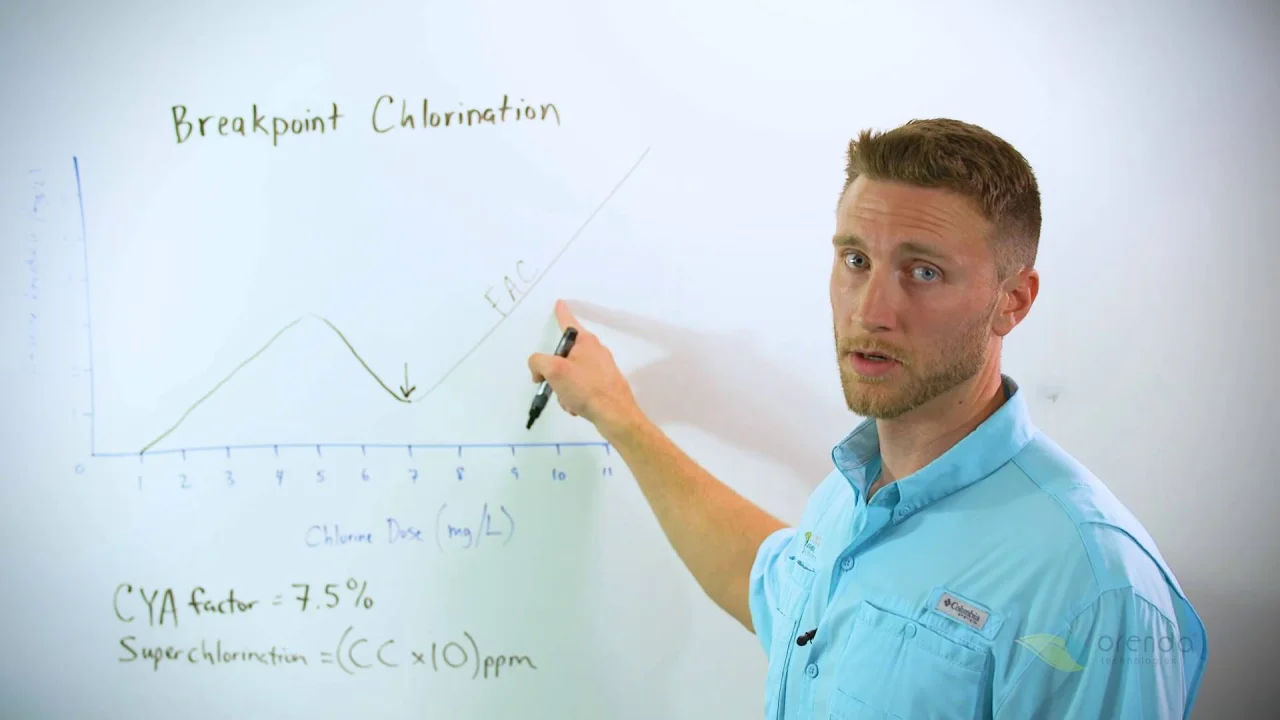
Additionally, there is often so much organic waste in the pool that the result is a partially-oxidized organic mess, and a lot of used-up chlorine. In a pool, the measurement of used-up chlorine is called combined chlorine. When combined chlorine is high (say, over 0.2 ppm), operators are often taught to “shock” the pool with a lot more free chlorine. This process is known as super- or hyper-chlorination, which is summarized well by Scott Webb:
Without getting too technical, traditional breakpoint chlorination is a process for dealing with chloramines or combined chlorine. You find the total chloramine content in a pool and hit it with 10 times that amount of free chlorine, which is supposed destroy the chloramines.
Of course, that plan only works if the added free chlorine really does, in fact, destroy the chloramines. Turns out it only destroys some of them.
The theory behind shocking is pretty simple: it’s a surge of chlorine to finish off the organic waste that used up all the previous chlorine. The byproducts of these chemical reactions are called chloramines, which can have some irritating effects for swimmers. These chloramines are one of the main reasons why many pools invest in secondary disinfectant systems such as UV. The problem is, UV is not out in the pool where all the action is...it has to wait for organic waste and chloramines to come through the filtration system.
Enzymes
This is the "cut up the steak and share it with your team" approach. Enzymes alone can eat plenty, but they need help breaking down the carbon structures of organic waste to do so efficiently. That’s where surfactants come into play. While chlorine oxidizes organic waste and leaves byproducts like chloramines, enzymes simply chew it up and digest it, leaving only CO2 and H2O behind.
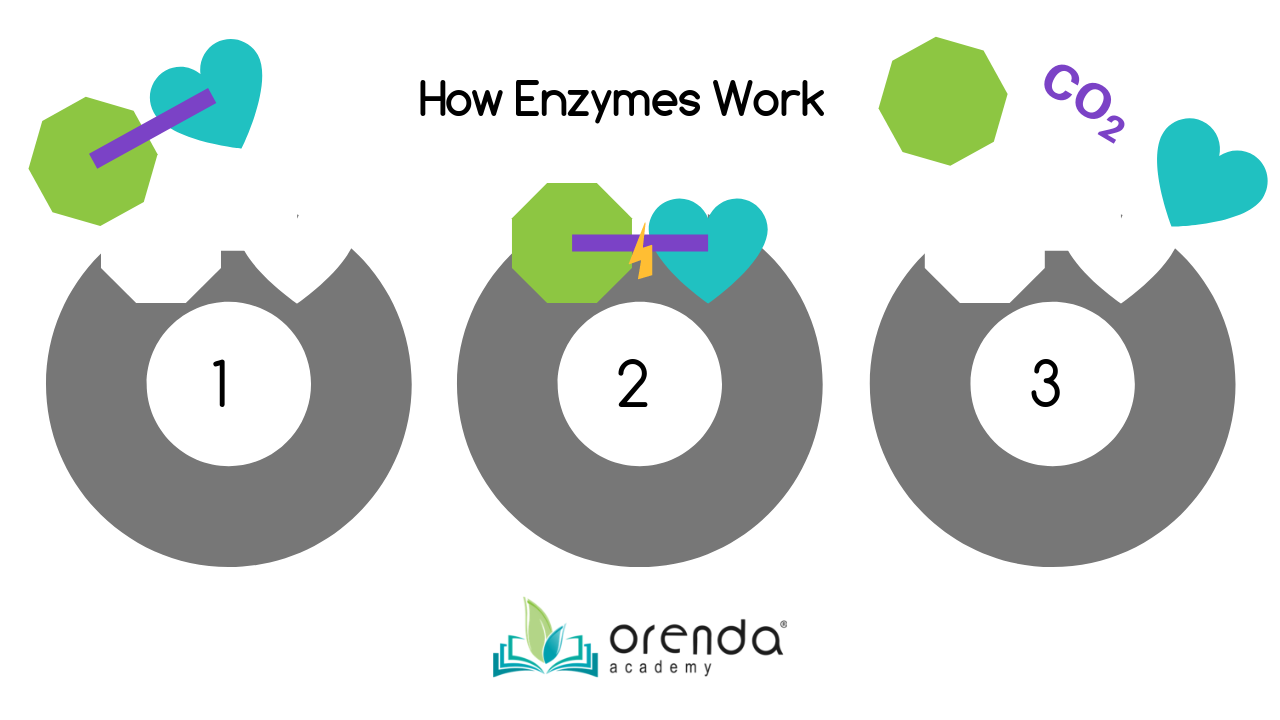
Used together in Orenda’s CV-600 and CV-700 products, enzymes and surfactants are a formidable team against organic waste. They clear a path for chlorine to disinfect the bacteria in water, rather than getting reduced dealing with the organic waste. Chlorine doesn't know the difference.
That deserves repeating: Orenda enzymes do not disinfect pool water—chlorine does. Enzymes digest organic waste to clear the path for chlorine to do its job more effectively.
Orenda Technologies uses a proprietary blend of surfactants and enzymes; the only blend on the market that is certified to NSF/ANSI® Standard 50. Amazingly, Orenda’s products, while harmless to people, are incredibly effective in treating swimming pools. Even the nastiest ones.
Organic waste vs. bacteria
Bacteria and other germs, unlike complex carbon-based organics, are generally simple, single-celled organisms. The simpler they are, the easier they replicate and spread. This makes them an easy target for chlorine, provided chlorine isn’t used up trying to burn bigger fires (like a hairball floating around in the pool).
If chlorine didn't have to burn as many of these more complex organic molecules, more of it would be available to kill that simple bacteria faster, which in turn would leave healthier, cleaner, clearer pool water.
But this leads us to some more questions:
Q: If Orenda enzymes eat through organics, do they eat bacteria too?
A: No, because bacteria is living material. These enzymes are formulated to eat non-living organics and waste only.
Q: Poop is non-living organic waste. If a pool is using Orenda enzymes, do pool operators still need to shock the pool and close it for a few hours after a fecal incident?
A: Yes, operators still need to shock and close the pool, per health code requirements. Orenda enzymes will break down and digest much of the problem, but the health risks are because of the bacteria in the feces, which—as we just discussed—are not disinfected by enzymes. The chlorine shock is needed for health and safety reasons.
Q: Our skin is covered with layers of dead skin. Do enzymes try to eat us?
A: Legitimate question...and the answer is no. They do, however, eat secretions from our skin, like sweat and oils. They also eat skin that flakes off our bodies. But even if enzymes did try to eat our dead skin, it would be less noticeable than chlorine’s effect—burning it.
The Orenda Difference
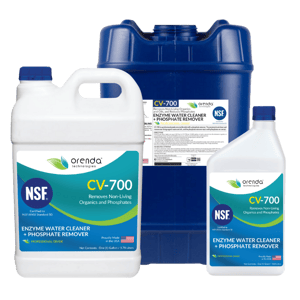 There are several brands of enzyme products you can buy for a swimming pool, so it is worth noting the differences between them. The most significant is the ratio and quality of both the enzymes and surfactants. Since Orenda upholds NSF® Standard 50, the purity and strength will be consistent in every bottle.
There are several brands of enzyme products you can buy for a swimming pool, so it is worth noting the differences between them. The most significant is the ratio and quality of both the enzymes and surfactants. Since Orenda upholds NSF® Standard 50, the purity and strength will be consistent in every bottle.
Competitors can make up for this difference in quality by adding more surfactants to their recipe, and fewer enzymes. While these products can make a pool shine in the short term, the effect soon wears off. Orenda product ratios are calculated for maximum effectiveness and engineered to ensure that the enzymes do the heavy lifting. Our customers recognize the Orenda difference.
Orenda enzymes were not made for swimming pools. They were originally industrial wastewater formulas. The difference in strength speaks for itself.
Orenda treated pools vs. traditionally treated pools
Same pool, same lane. The only difference? The Orenda Enzymes
Orenda proudly treats several pools that are home to some of the greatest swimmers in the world. For example, Queens University in Charlotte trains in Orenda-treated water. We have spoken with many of the athletes and coaches, and most of them had no idea what we did, but they did notice a significant difference in clarity, feel, texture, taste, and smell.
But do you know what they noticed the most?
After getting out of the pool, their skin isn’t as dry, and their hair doesn’t feel as dry and brittle. To swimmers, that’s a big deal. Most swimmers leave the pool early in the morning and go straight to school, so chlorine stays on their skin all day, and their hair takes more and more shampoo to heal.
What if you didn’t need as much chlorine anymore, and still had a clean, healthy pool? And what if you eliminated the need to shock, except during fecal incidents? What could reducing chlorine demand do for your operating budget? What could it do for your patrons’ comfort and for their longer-term skin and hair health? What could that do for your pool’s appearance, reputation, and maintenance costs?
Maintenance costs
Orenda enzymes and chlorine circulate through the entire filtration system. Together, they clean out the inside of pipes and filters. Oftentimes, filters get clogged up because of organic waste…but Orenda products break that waste down, reducing the need for filter maintenance (like replacing the filter sand). It also can reduce backwashing, by eating through the gunk and grime that causes back-pressure to build in the filter tanks.
Using enzymes in pools is a non-toxic, non-hazardous, eco-friendly alternative to shocking with chlorine. They serve a different purpose than secondary disinfectants like UV, because they circulate throughout the pool instead of being stuck in the pump room waiting for contaminants to pass through.

